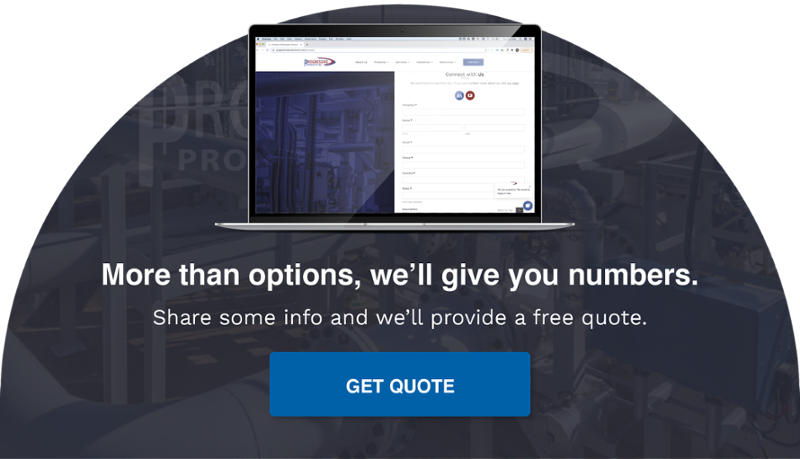Because unexpected downtime of a pneumatic conveying system can be costly to an operation, it’s essential to minimize the risk however possible. One of the chief ways you can do this is with regular preventive maintenance.
Here are three general tips you should keep in mind to help ensure that your pneumatic conveying system stays in top shape.
Watch Out for Signs of Trouble
No matter what you’re conveying in your pneumatic system, it will eventually start to wear down somewhere. By staying on top of your preventative maintenance plans, you’ll be able to catch problems while they’re still small and avoid complete system breakdowns. Keep an eye out for the following:
- Increased throughput time
- Drops in powder dosing or in dispensing volume accuracy
- Leaks anywhere in the system, especially the joints, connections, lines, and tubes
- An increase in operating pressure or vacuum levels
If you see any of these warning signs, it's critical that you inspect your system to see where the problem lies and also reevaluate your overall preventative maintenance plan and see where you could improve it.
Keep Your System Manual Handy
The manuals from the original equipment manufacturer (OEM) are full of specific guidance on what preventive maintenance your particular system needs. They will recommend how often you should perform maintenance, what steps are involved in that maintenance, and what level of knowledge the employees performing the maintenance should have. For example, some maintenance steps can be achieved by operators, while others will require trained personnel or even require an outside field service technician.
Additionally, your manual will include a list of spare parts, including a list of consumable or worn parts that you should have on hand to keep up with maintenance. It may also include a list of parts whose lead times may be longer than usual, such as blowers, solenoid valves, and programmable logic controllers. If any of these parts go down, you’re looking at a total system failure that could lead to excessive downtime and financial loss. For this reason, it’s important to keep at least one or two of these parts in-house at all times.
Inspect and Replace Parts Regularly
Preventative maintenance is critical to keeping your operation running smoothly. But it can’t be performed just once in a while — it ought to be regularly scheduled because some parts and components must be inspected more frequently than others. Here are some recommendations on what you should check and when you should check it.
- Before Every Shift. The machine operator should always inspect the machine before their shift starts. Dosing equipment, lines, flex sleeves, tubes, screw feeders, and screens should all be checked to ensure no damage, no clogs, and no excessive build-up are present. Overflow containers should be inspected and emptied if they are full.
- Daily. After start-up, the machine operator or an in-house maintenance tech should verify that seal pressure and blower temperature are within the recommended ranges presented in the OEM guidelines.
- Weekly. All valves and safety switches should be inspected by an in-house maintenance tech to ensure they are working properly.
- Monthly. All seals should be greased, and the ventilation and filtration systems on the blower should be checked and cleaned. Wear parts — such as filter cartridges, socks, metal cages, seals, and gaskets — should be inspected and replaced. If your system is washed down, you should check the filters and ensure they are dry so that no moisture gets into the system.
- Annually. The entire system should be locked down or tagged out for a complete cleaning, servicing, and inspection. All of the components, including lines, tubing, dosing equipment, screens, and pressure generators, should be inspected and cleaned, and all grounding systems should be tested to ensure that they are functioning properly. Oil levels on pump mortars should be checked and changed accordingly, and all consumable wear parts, such as baffle flaps, v-rings on drive shafts, sealing gaskets for screen frames, filters, as well as any seals, gaskets, joints, and tubing that show signs of damage should be replaced.
By keeping an eye out for trouble, referencing your OEM system manuals, and having preventative maintenance performed regularly on your pneumatic conveying system, you can help avoid costly breakdowns and downtime.
If you need parts to maintain your pneumatic conveying system, contact the professionals here at Progressive Products. We’ll never sell you anything you don’t need and have over 40 years of experience helping people like you maintain and get the most out of their pneumatic conveying systems.


